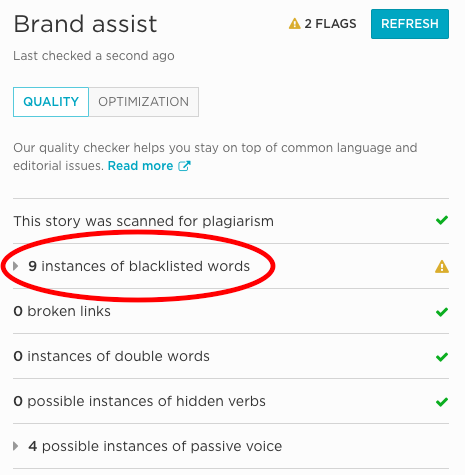Brands
Why We Stopped Using the Word ‘Authentic’
Every night, when I come home from work, I walk by a little billboard in the Hoboken PATH station that makes me gnash my teeth. It’s an ad for a yoga studio. I’ve seen two variations, one for men and one for women. The billboard meant for women contains 15 words of copy: “I am a sister. I am a runner. I am authentic. I do hot yoga.”

The sign reads like a parody of the worst kind of lifestyle advertising. What does being a sister have to do with yoga? The more I walk by it, the less sense it makes. The third line gets to me the most, though. “I am authentic” just doesn’t communicate anything concrete or valuable to the consumer.
There are plenty of popular marketing terms that irritate me (“subject-matter experts,” “micro-moments,” “thought leadership”), but “authentic” bothers me the most. While crappy buzzwords are usually just convoluted ways of saying simple things, “authentic” is especially problematic because of its hollowness. Marketers frequently use it in a way that’s either meaningless or contradictory.
Now I get to make sure that the word never ends up on The Content Strategist.
Last year, Contently started developing cross-functional teams to add new features to our software. The philosophy was that bringing people together from different departments could lead to a more insightful perspective. My team—consisting of account managers, developers, salespeople, talent managers, and editors—focused on improving the editing experience. So we developed a tool, called “Brand Assist,” that could quickly identify common issues like passive voice, plagiarism, broken links, and blacklisted words.

These triggers provide a snapshot of a story’s technical quality so editors and decision-makers can spend their time on the big picture.
Calling out blacklisted words became a subtly important part of that process. Every publication operates with an editorial code, and in the world of content marketing, editors often enforce very specific rules related to marketing goals and brand governance. I’ve talked to brand editors who aren’t allowed to publish certain terms, like “Super Bowl,” due to copyright concerns. Others may not want to include names of competitors or competitors’ products. You’d be surprised how two or three of these blacklisted words can sour an otherwise good draft in the eyes of some editors. Now writers can check the list before they start a draft to proactively avoid compliance missteps.
As the managing editor of The Content Strategist, I also saw the feature as a way to tighten the language on our publication. Eliminating “authentic” has become part of my editorial code, alongside a few other preferences that aren’t shared by all publishers. For example, we always use the Oxford comma because it eliminates any ambiguity when grouping terms in a list. And we don’t capitalize job titles, because there’s already enough emphasis on someone who gets to be the senior ninja of customer happiness. The more rules we add, the harder it is to stay on top of them all, especially when new writers and editors need time to learn our style guide.
During my three years at Contently, I’ve noticed more writers and PR contacts relying on the A-word as a crutch in pitches and articles, normally as a way to explain why some campaign was successful. It’s such a vague word that could be replaced by more substantive alternatives like “genuine,” “honest,” or “self-aware.”
On the brand side, marketers of all kinds have been falling back on “authentic” as well. But what exactly does that mean? Language is certainly an important differentiator in marketing, yet every company wants to be authentic and sell authentic products. This type of advertising has become pervasive. A pizzeria in Salt Lake City can’t offer customers authentic New York pizza unless it’s actually located in New York. (Of course, pizza places in New York don’t have to explicitly say they’re from New York.)
To me, the mistake conflates identity with quality. It assumes that a pizzeria’s appeal comes down to some imprecise superiority rather than, say, talented chefs, unique recipes, and fresh ingredients. This kind of thinking obscures the good qualities and differentiators that brands should actually emphasize. The more they push for authenticity, across all industries, the less the word means.
If the word shows up in a draft, I remove it every time (unless the writer uses it satirically).[note]I broke my own rules in this piece, but it’s for a good cause.[/note] If it’s part of a quotation, I try my hardest to cut out that sentence and look for a more meaningful talking point from the interview. Having this automated assistance ready for me on every draft saves time and simplifies the approval process. All I had to do was enter it into our publication guidelines.

Our editorial team puts a lot of effort into preserving clarity and consistency throughout our articles. I think we’ve been successful thus far because we treat our audience with intelligence. Marketing clearly has a language problem—if you’re skeptical, I’d encourage you to read the series that Joe Lazauskas, our editor-in-chief, wrote last year on bad buzzwords. Now we get to address that problem head-on, one word at a time.
Image by TJ Hunt / GettyGet better at your job right now.
Read our monthly newsletter to master content marketing. It’s made for marketers, creators, and everyone in between.




